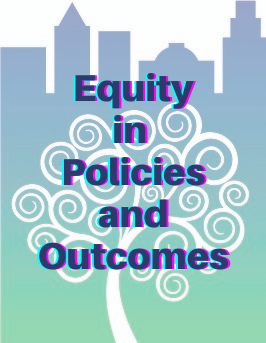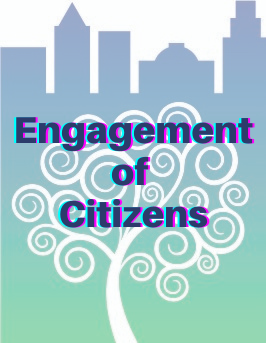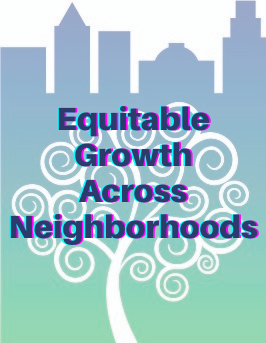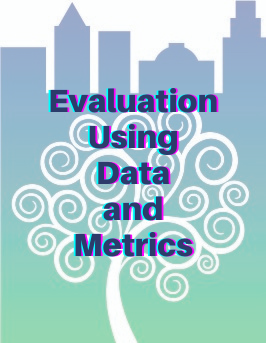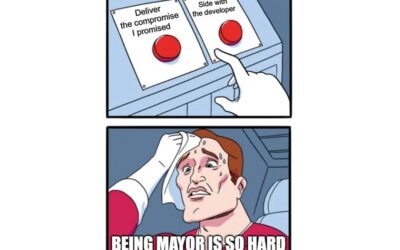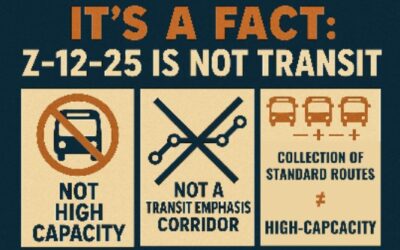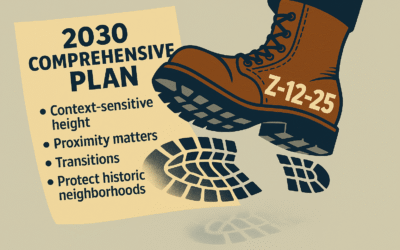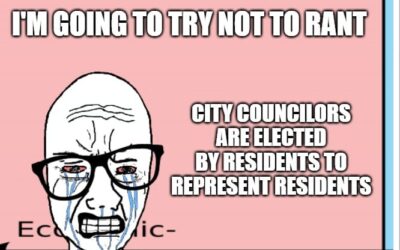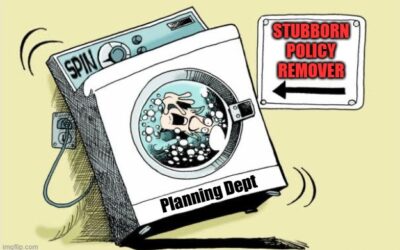Upcoming Raleigh Events
CITY COUNCIL MEETINGS
COMMUNITY ENGAGEMENT
Neighborhood Rezoning Meeting: 8020 Litchford Rd.
Neighborhood Rezoning Meeting: 8020 Litchford Rd.
District E Meeting in conjunction with RPAC
District E Meeting in conjunction with RPAC
Neighborhood Rezoning Meeting: 4601 Creedmoor Rd.
Neighborhood Rezoning Meeting: 4601 Creedmoor Rd.
Voice Your Ideas for a More Accessible Raleigh
Voice Your Ideas for a More Accessible Raleigh
District D Neighborhood Alliance (DDNA) meeting
District D Neighborhood Alliance (DDNA) meeting
Read up on our latest news…
Mayor Cowell talked compromise for 6 months. What happened?
The approval of Z-12-25 was a huge disappointment to many of the residents in Raleigh’s neighborhoods. What is most disappointing is that there was a workable compromise that would have respected all parties.
David Cox announces decision
A few weeks ago I wrote in a blog that I would consider running for Mayor of Raleigh. I stated that there is much concern about the direction of the City and many have asked that I consider returning to Council. I identified three major areas of concern. I see these as essential issues facing the City and its future. Only with citizen involvement and a Council and Mayor willing to support its citizens will Raleigh be sustainable in the future as a desirable and affordable place to live. We can choose to be Raleigh or we can choose to be New York or Atlanta.
Aggies DO! If you don’t, Get Out The Way!
Byron Laws spoke to the Raleigh City Council on the topic of the City Council approved African American Affairs Board that has never been seated. Byron is an Aggie and says Aggies DO! If you don’t, GET OUT THE WAY!
City Council Meetings October 14, 2025
Updates on the Comp Plan and the Mobility Study. Public comments on the noise ordinance as well as the Big Branch Greenway connector, changes to City Boards and Commissions, community engagement, Dix Park, and issues with GoRaleigh. A number of bus drivers are concerned about their own safety and other working conditions.
City Council Disappoints Again with Z-12-25
The City Council’s decision to approve the rezoning case on West Street (Z-12-25), adjacent to the Glenwood-Brooklyn neighborhood, is hard to understand – unless, that is, you understand that a majority of Council always approves rezoning cases, no matter how outsized, because the development industry controls them.
October 7, 2025 City Council Meeting
Highlights from 10/7 Council Meeting
Been There, Done That!
The city has grown enormously in the past few years, as people from all over began to recognize it’s a great place to live. But this growth was accompanied by absolutely no planning – or bad planning – which means we are now living in a helter-skelter atmosphere akin to a Third World city in which anything goes. Along with this has come a lapdog attitude when it comes to the city council’s relationship with developers. Sound familiar? This commentary was written 5 years ago in 2019.
Former City Councilor Considers Run for Mayor
I was elected three times and was honored to serve District B and the City for seven years. Despite not being on Council since 2022, I continue to hear from people. There is much concern about the direction of the City and many have asked that I consider returning to Council. As with the first time I ran, I need good reasons to run. I take serving seriously and never had a desire to run just for the sake of running. I want to be clear that I have not made a decision to actually run. If I do, I will run for Mayor. And here are some of the reasons why.
Z-12-25 West St Tower – Video – Bring Down the Height
The public hearing for this case will be held Tuesday, October 7 at 7pm. This public hearing will allow ONLY 8 minutes in TOTAL for those in opposition to present their case to City Council. Watch this video outlining the full fact and policy based opposition to Z-12-25. The 240’/360′ towers, in a transition area, 776′ along Historic Glenwood-Brooklyn Neighborhood only 190′ to 240′ feet from homes violates all plans, polices, urban planning guidelines and logic.
Why ask for public input only to ignore it?
I honestly have to ask – why seek public input if it’s not reflected in the analysis? Community engagement should serve as an opportunity to either mitigate community concerns or provide a transparent and respectful explanation when disagreement exists.
Z-12-25 does NOT meet Transit Land Use criteria
For a site to be designated as a Transit Land Use category, it must meet the definition “fronting along a corridor programmed for high-capacity, frequent bus transit.” The West St site meets ONLY the frequent transit criteria but fails the other two. It does not qualify for the Transit Land Use category.
Planning Department Fantasy!
Our Comprehensive Plan says building heights should transition from the Central Business District to residential neighborhoods. The planner says 30 stories is transition. FANTASY!!
Z-12-25 Stomps on Raleigh’s Comp Plan
Raleigh has the tools and the policies to manage growth responsibly. Z-12-25 ignores them. Approving this rezoning would not only damage a historic neighborhood but also set a precedent that threatens every neighborhood in Raleigh. The Comprehensive Plan shows us the path forward: moderate, context-sensitive growth that strengthens, not undermines, our city’s future.
City Council Mid-Year Retreat, September 27, 2025
Council retreat focused on Federal Grants, Legislative Agenda, Steady State Bonds, “Big Ideas,” the next Comprehensive Plan, and Expansion of Affordable Housing Sites
City Councilors are elected by residents to represent residents
City Councilors, it is your job to make sure that city staff knows that their job is to protect the interests of the people that live in Raleigh, not to just make things easy for businesses and developers.
Honor the Process. Planning Runs Policies thru the Spin Cycle
The materials being presented by the Planning Department in support of Z-12-25 do not create a complete picture or analysis that is useful for basing your decision on this third round of change requests for these particular parcels. A good analysis of compatibility should take a broad view of relevant rules, plans and guidance, and it should reflect stakeholder input with integrity. Given the inadequacies of the materials provided to you, there is no way you can come to a rational conclusion of consistency with the comprehensive plan.
Selective Policy Emphasis and a Disregard for Neighborhood Protections
Are we just counting which policies are convenient for a project and ignoring the ones that aren’t? This isn’t about stopping growth. It’s about rejecting a project that ignores codified transition areas, disregards protections for historic neighborhoods, and offers no real public benefit for on-site affordable housing.
Thank you for letting us all know when the king is naked!!
I appreciate your constant vigilance, your push for accountability and how you seek and embrace feedback from your members and your community of followers.
It’s OK to Say NO to a Developer
the proposed 30 story tower at Peace and West Streets would be triple the height of the building across the street where Publix is. It will grossly overpower the entire neighborhood. I am all for development within reason. It is ok to say no to a developer.
September 16, 2025 City Council Meetings
Highlights from September 16 Council Work Session and Afternoon Session


